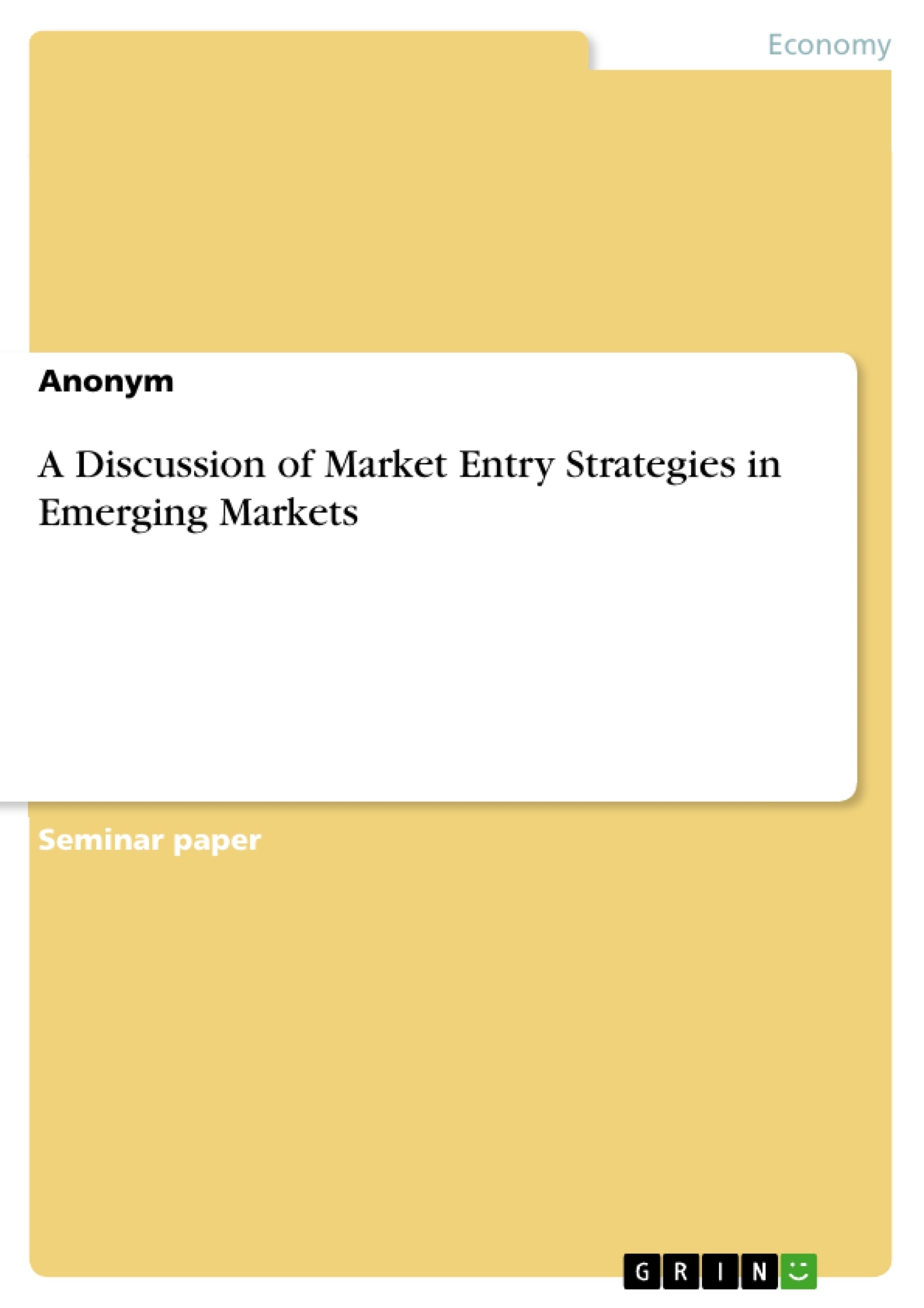The Seminar Paper at hand aims at contributing to the controversial issue of pursuing an appropriate market entry strategy for companies in emerging markets. In order to do so, it sets off with a definition of the term “Market Entry”, followed by outlining the basic motives that push companies to enter foreign markets. Thereafter, in Chapter 3 as the main part of the Paper, the four key elements of a comprehensive market entry strategy are pointed out at first, to be then described and analyzed more detailed in the following sub-chapters. Chapter 4 puts emphasis on the topic of emerging markets as it is the chosen target market to be analyzed in the context of this Paper. After giving a definition of the term itself the basic characteristics and specifics of emerging markets are illustrated. The last chapter finally sums up all findings of the Seminar Paper and provides approaches on how to choose the right entry strategy whilst paying special attention to the appropriate market entry mode. To top off the Paper an outlook on detailed analysis that should be in the focus of further investigations is given.
Table of Contents
Table of Contents
List of Abbreviations
List of Figures
1. Introduction
2. Foreign Market Entry
2.1 Definition of Market Entry
2.2 Motives for Foreign Market Entry
3. Elements of International Market Entry Strategies
3.1 Choosing the Target Market
3.2 Setting Objectives and Goals
3.3 Choosing the Entry Mode
3.3.1 Export Modes
3.3.2 Intermediate Modes
3.3.3 Hierarchical Modes
3.4 Designing the Marketing Plan
4. Emerging Markets
4.1 Definition
4.2 Characteristics
5. Conclusion and Outlook
Bibliography
- Quote paper
- Anonym (Author), 2016, A Discussion of Market Entry Strategies in Emerging Markets, Munich, GRIN Verlag, https://www.grin.com/document/492124



